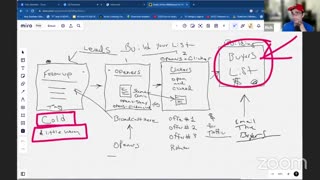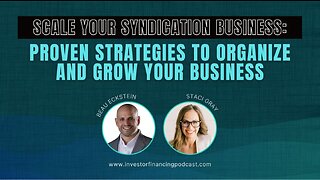#28 Sales Deck
A sales deck, also known as a pitch deck or presentation, is a visual and textual tool used by sales teams, entrepreneurs, and businesses to effectively communicate their products, services, or ideas to potential clients, investors, or partners. The purpose of a sales deck is to convey key information, showcase the value proposition, and persuade the audience to take a desired action, such as making a purchase, investing in the company, or forming a partnership.
Here are the key components typically found in a sales deck:
Introduction: Begin with a brief introduction about your company, its mission, and its core values. This sets the stage for the rest of the presentation.
Problem Statement: Identify the problem or pain point that your product or service aims to address. Clearly articulate the challenges your audience may be facing.
Solution: Present your product or service as the solution to the identified problem. Explain how it addresses the pain points and provides value to your potential customers.
Value Proposition: Highlight the unique selling points and advantages of your offering. What sets your product or service apart from competitors? How will it benefit the customer?
Features and Benefits: Provide a detailed overview of the features of your product or service and explain how each feature translates into tangible benefits for the customer.
Market Opportunity: Share data and insights about the target market, including size, growth potential, and any trends that make your offering timely and relevant.
Traction and Milestones: Showcase any significant achievements, customer testimonials, partnerships, or milestones your company has reached. This builds credibility and demonstrates that your product/service has already gained traction.
Business Model: Explain your revenue generation strategy. How do you plan to make money? Describe your pricing model, subscription plans, or any other relevant details.
Competitive Analysis: Provide a comparison between your offering and your key competitors. Highlight your strengths and how you differentiate yourself in the market.
Go-to-Market Strategy: Describe how you plan to reach your target audience. This could include marketing strategies, sales channels, and distribution methods.
Financial Projections: Share relevant financial data, such as projected revenue, expenses, and growth forecasts. This is especially important when pitching to potential investors.
Call to Action: Clearly state the desired action you want your audience to take. Whether it's making a purchase, investing, or scheduling a follow-up meeting, guide them on the next steps.
Contact Information: Include your contact details and any relevant social media or website information so your audience can easily reach out for more information.
Visual Elements: Use visually appealing graphics, images, and charts to enhance the presentation and make it more engaging.
Remember that a sales deck should be concise, focused, and visually appealing. It should capture the essence of your offering and persuade the audience in a limited amount of time. Customizing the content based on your audience's needs and interests can greatly improve the effectiveness of your sales deck.
www.antharas.co.uk/ companies website or top book distributors!
#BusinessStrategy
#Entrepreneurship
#Leadership
#Management
#Marketing
#Finance
#Startups
#Innovation
#Sales
#SmallBusiness
#CorporateCulture
#Productivity
#SelfDevelopment
#SuccessStories
#PersonalBranding
#Networking
#Negotiation
#BusinessEthics
#TimeManagement
#GrowthStrategies
#MarketAnalysis
#BusinessPlanning
#FinancialManagement
#HumanResources
#CustomerExperience
#DigitalTransformation
#Ecommerce
#SocialMediaMarketing
#BusinessCommunication
#ChangeManagement
-
 11:04
11:04
AV
10 months ago#55 Sales
10 -
 12:02
12:02
AV
10 months ago#43 Smarketing
1 -
 3:57
3:57
aceandrich
11 months agoHow To Make Sales With List Building - Why Your Not Making Sales
5 -
 3:27
3:27
edwindela
10 months agoHow to Sell Anything | Double Your Sales with These Strategies.
6 -
 11:04
11:04
Jspec33
11 months agoMarketing For Deck Contractors: Is Facebook A Good Marketing Channel For Deck Builders?
28 -
 0:51
0:51
KnightRequiredfield
6 months agoFrom Store Shelves to Big Bucks! A Reseller's Guide to Success! #theflippingteam
2 -
 0:50
0:50
KnightRequiredfield
6 months agoProfitable Picks! Amazon Buying and Reselling Techniques! #theflippingteam
2 -
 3:28
3:28
Ten Ton Online
2 years agoWhat Is Marketing In Business? Here's A Clear, Straightforward Answer! @TenTonOnline
2 -
 35:45
35:45
Investor Financing Podcast
1 year agoScale Your Syndication Business: Proven Strategies to Organize and Grow Your Business
27 -
 17:19
17:19
Real Estate Agent Tips with Josh
10 months agoRealtors Talking with Sellers Series - Ways I Present Offers, Maybe these will help you? - Pt 5 of 8
7